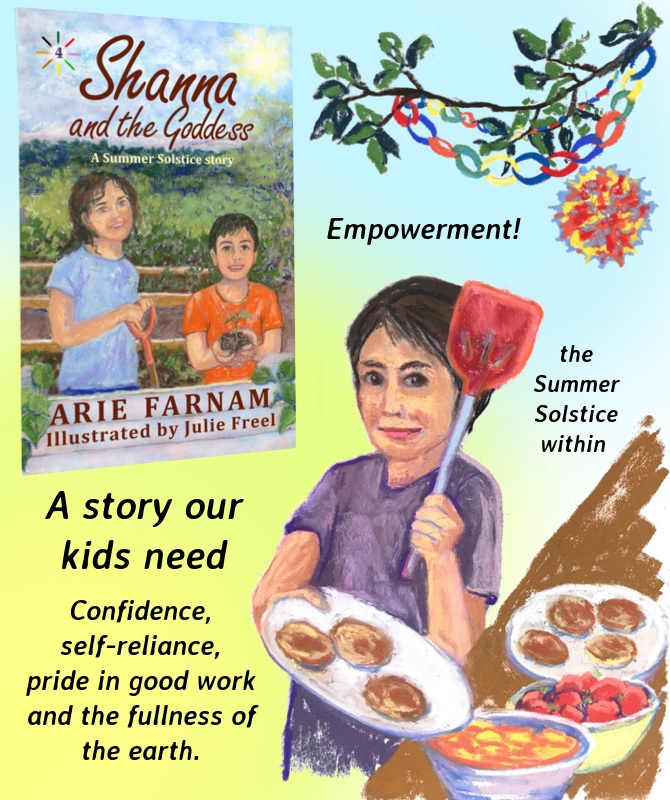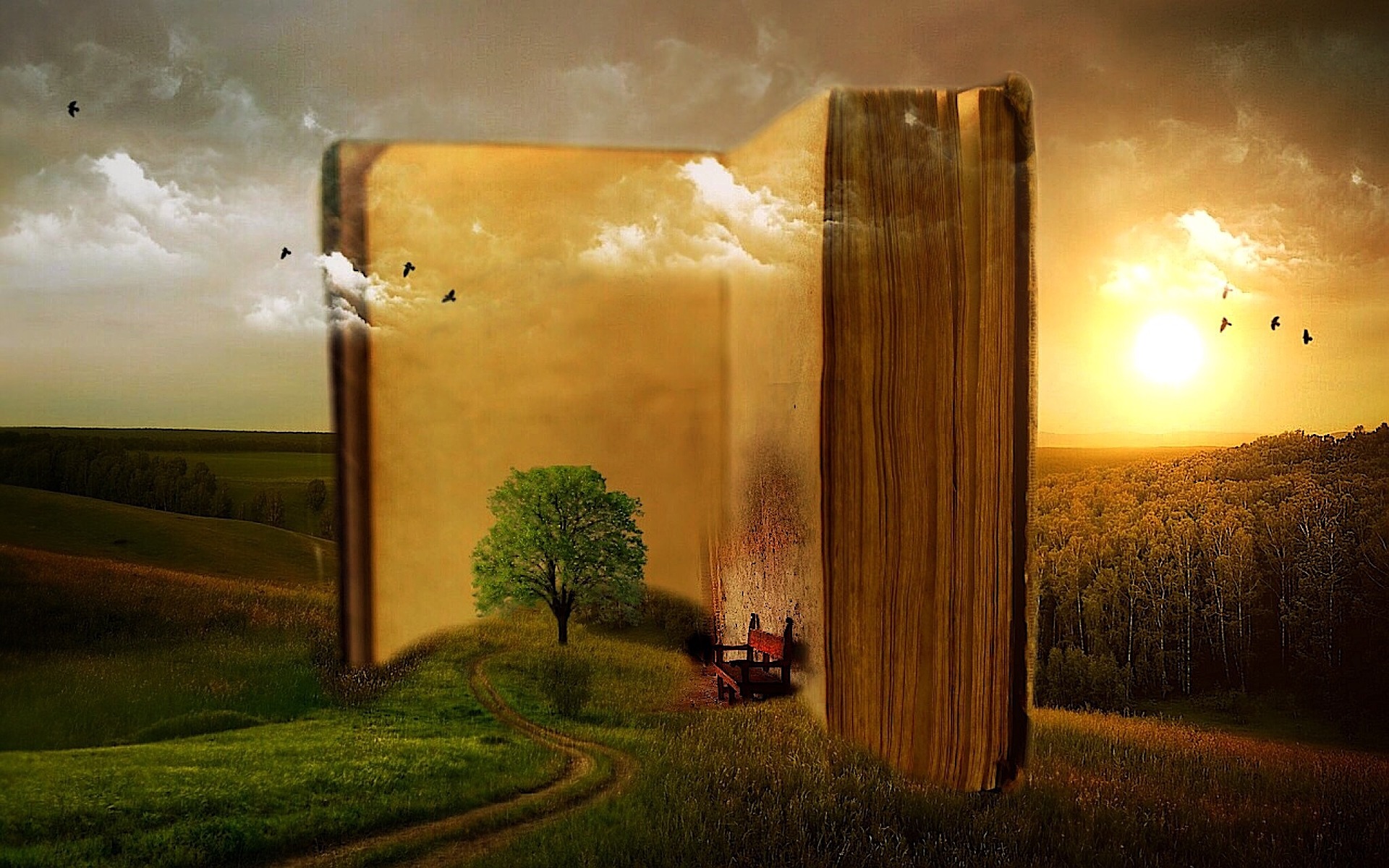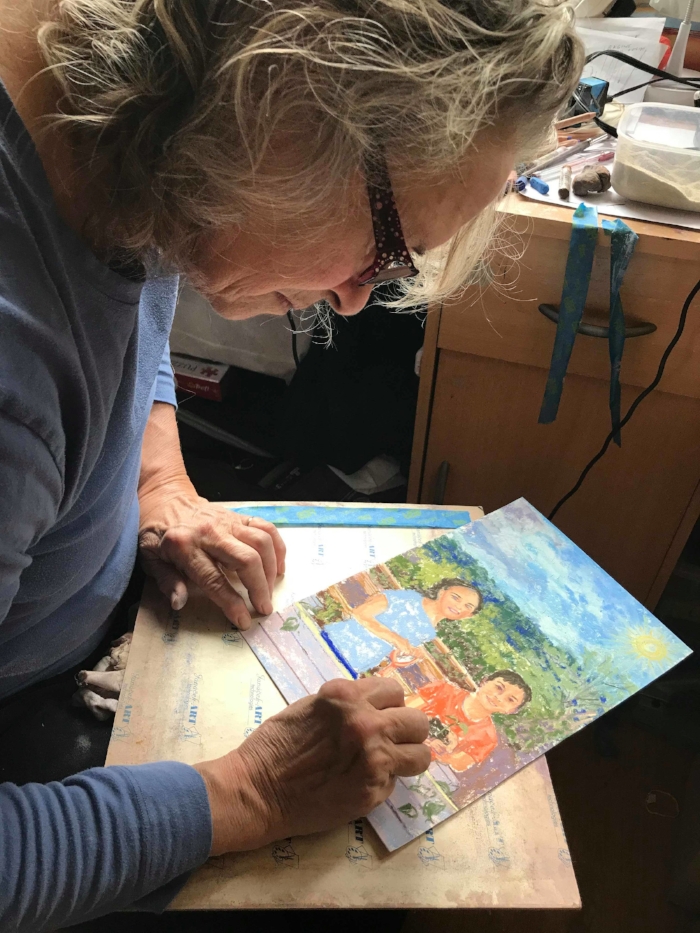Fighting back with story and hope: The Blue Witch and ICE
/It’s hard to believe it’s only been one moon since I last wrote to you. It feels like the world has gone mad. We were bracing for trouble, but what has happened in one short month is beyond what most of us could possibly imagine.
I’ve thought of at least ten incisive, angry, informative, necessary topics I could write about in the past two weeks. But I know you are as exhausted and frazzled as I am. And I know that the exhaustion is targeted and intentional. Those that are usurping our democracy, our prosperity and our fragile hope for a livable future want us to be so overwhelmed by their chainsawing of our reality, so that we won’t be able to respond coherently.
So, I will not be one more place to find a catalogue of our despair, at least not for now.
You do not need my voice to point out specific points in the avalanche of heartbreak and fear. Protests in major cities are happening, but they’re scattered and dispersed across so many different issues that none of them are truly massive. Any particular thing I might cry out about would be one among the many.
Instead, I want to tell you about the little bit of hope I’ve seen this month. The response of people in small conservative towns in red counties, at least where I live, has been more aware and more courageous than I expected. I remember protests against the wars in Iraq here in my small town of La Grande, Oregon. We were a little knot of protesters, huddled in front of the post office. Men in big trucks threatened us, insulted us and threw rocks at us. Protesting right-wing ideologies, corporatism and militarism out here has always been hard and only for the intrepid.
But something has changed.
In the past month, we’ve seen more protest in places like La Grande, Baker City and Pendleton, Oregon than ever before. We’ve filled town halls with hundreds of furious, articulate voters demanding that their self-satisfied, safe-seater Republican representatives stand up to their corrupt party. We’ve filled the squares and sidewalks with protesters and homemade signs, while streams of cars honk their approval. And this isn’t some watered-down, right-wing version of protesting the Trump coup. The signs are like everyone else’s “Freedom, not fascism,” “Save Medicaid,” “Trans-rights are human rights,” “Stand with Ukraine,” “Immigrants welcome here,” “Support federal workers,” and so on.
This effort has been so grassroots that there was no organization taking the lead, but I've been able to connect with the handful of people who started the local protests and they are swiftly moving toward developing an inclusive, grassroots organization that others can join. They are days away from announcing a name and an email/FB page. If you are local in Eastern Oregon and would like to be involved, reply to me and I'll pass along your email. By next week there will be an organization to get involved with, as well as a social event on Friday, March 21. And the next massive protest both locally and nationwide happening on April 5.
I also correspond with protest organizers in larger cities and many are justifiably afraid a harsh crackdown is coming. They’re facing attacks from isolated right-wing fanatics who threaten violence at peaceful pro-democracy demonstrations. And I think back to when we were surrounded by men with guns and rocks and trucks, and we stood anyway. It’s hard but I know they can withstand this.
The reaction of so many rural people is hopeful to me. Our protests—a hundred here, a hundred and twenty there—may barely even make the local news, but percentage-wise they are bigger than the big city protests. Everyone in town knows. It’s unavoidable. And this is where the pressure is more likely to be felt by those right-wing politicians who claim to represent middle America. They don’t represent us. They have betrayed rural people, and we are telling them so loud and clear.
In this context, and specifically for those involved in resistance in big cities and small towns alike, I want to focus on things that will provide hope and impetus to action. I believe we need stories that lift our hearts. So, today I set out to spark a myth—the myth of the Blue Witch. She’s in a small town, a lot like mine, a lot like yours. She’s just around the next corner, a helping hand, a magic touch.
The following is a story that came to me, and I hope it will be the first of many, to be written by me or others. The Blue Witch is in all of us, a magic of compassion, mutual aid and respect for all people in democracy.
Creative commons image of a full moon by Rachel Kramer on flickr.com
The Blue Witch and ICE
Emma the Witch lives in a shabby bungalow between an ash and a black cherry. She moved in three years ago, pulling up with a moving van and a sullen teenager. The neighbors might have believed the profusely pierced teen was a witch, but not Emma. She unpacked her boxes, planted zinnias, calendula and cone flowers and acquired just one cat.
In witch movies, you can always tell a witch by her appearance, but Emma isn’t either alluringly sexy or in possession of a long warty nose. Instead, she’s a bit shorter than medium with fluffy, graying hair that she gets professionally feathered. Instead of slinky, sequined outfits or long dark robes, she favors slightly wrinkled cotton slacks and knitted vests.
The first neighbors to discover her secret were Rodrigo and little Marita. ICE agents were monitoring the school-bus stop that day, and as soon as the door was open, they started cornering kids and any adults meeting them by twos and threes. Rodrigo snatched up Marita, his tiny daughter so proud of her first-grade backpack, and strode briskly down the nearby alley, away from his apartment. No way he was leading them back to Jaunita.
He forced himself not to look back, hoping to be inconspicuous, but he could hear them coming, trying to corral the teenagers and follow him at the same time. That’s when he saw Emma opening her backyard gate, her soft gray eyes wide with intant realization.
Her hand flicked, beckoning. Another finger going to her lips.
A split-second decision and he was through the gate, crouching down behind the weathered planks of the fence. But there were cracks in it. Surely, they’d be seen, and there were already running footsteps and the threatening “bleep” of a cruiser.
Emma put up a hand, silent. If they ran toward the house or the front, they’d be heard. She darted like a little gray sparrow in her garden, snatching something off a nearby rock wall covered with odd crystals, little statues and herb pots. She pressed it into Rodrigo’s hand free hand, folding his fingers around a jagged white stone, and again, put her finger to her lips.
As the boots and raised voices came near, she dug in the canvas bag at her side, bringing out a black velvet pouch, opened it and swiftly scattered handfuls of sulfur-smelling, herbal dust on the fence and around Rodrigo and Marita, her lips moving in a silent chant.
“He must be down here!” The voice was just on the other side of the fence. The agents ran their sticks along the planks and knocked over recycling bins. Once Rodrigo thought one of them stared right through at him, but it was like his eyes didn’t see.
No time to really feel the fear, and then they moved on. When it was quiet, Emma beckoned them inside and made tea. “Bruja?” Rodrigo wondered, but it didn’t matter. He’d keep her secret.







































